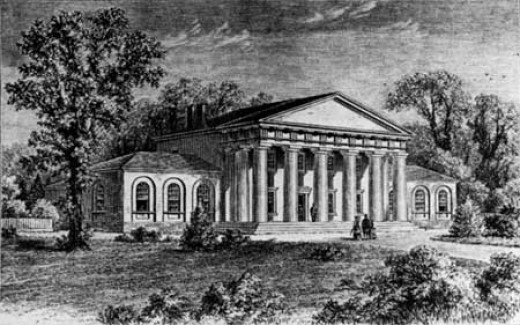
Unlike Monticello or Mount Vernon, Arlington House is not privately owned, nor does it have the significant fundraising operations and endowment from which those properties benefit.
Federal funding has resulted in a long-overdue partial internal restoration, fire suppression system installation, window restoration, a new comfort station and an underground utility bunker. Though this partial renovation somewhat improves the site physically, it is evident to first and repeat visitors alike that Arlington House still needs significant support to fully restore the house. Restoration that adequately reflects Arlington House’s unique role in history can only be fully realized when federal dollars are leveraged with private philanthropic support.
With the generous assistance of David M. Rubenstein, the complete restoration of the mansion will become a reality. "In July of 2014, National Park Service (NPS) Director, Jonathan B Jarvis and National Park Foundation President and CEO, Neil Mulholland joined businessman and philanthropist, David M. Rubenstein to announce Rubenstein's $12.35, million donation, a lead gift in the National Park Foundation's Centennial Campaign for America's National Parks, to restore and improve access to Arlington House, The Robert E. Lee Memorial.
Your contributions will directly support the below projects that will aid in the preservation of Arlington House and attendant buildings and grounds.
- Research and support for in-kind window treatments for all rooms and prepare a complete design plan sufficient to guide replacement with historically exact treatments.
- Aid in the return of original/historic furnishings for Arlington House.
- Archaeology review and renovation of the basement of the house, especially the “dry well” area.
- Restore the summer garden to include Mrs. Lee's garden.
Please join us.

George Washington Parke Custis, builder of Arlington House, was also a painter. Custis painted Revolutionary War battle scenes featuring his 'father', George Washington. He also painted murals of hunting scenes in the back hall of the house

Arlington House was built by slaves on the plantation of handmade brick covered with a very hard cement called “hydraulic cement,” and the surface was scored and painted to look like marble and sandstone.One of the earliest Greek Revival structures, and one of the earliest residences to use the “Colossal Orders,” (the huge columns that span the entire two stories of the house), the plan is attributed to George Hadfield, a young English architect who had earlier worked on the United States Capitol building. The huge columned portico was intended by George Washington Parke Custis to be conspicuous from the city. Mr. Custis wanted a fitting memorial to George Washington and a safe place to display his collection of George Washington's memorabilia, which he called his “Washington Treasures.”